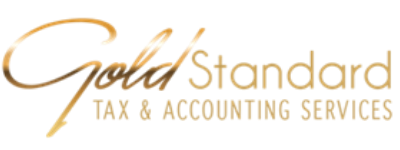Good News!
Updates on the PPP Loan
Many of our clients took out a PPP Loan in 2020. Here are some updates about this loan....
The new Paycheck Protection Program (PPP) law enacted with the stimulus package adds dollars to your pockets if you have or had PPP money.
Before we go further, please note the PPP money comes to you in what appears to be a loan. We say “appears” because you typically pay back a loan.
Done right, however, the PPP loan is 100 percent forgiven. The word “loan” makes some businesses leery of this arrangement. Don’t be. The PPP monetary arrangement is a true “have your cake and eat it too” deal.
And this remarkable deal applies to your past PPP loan, the PPP loan you have outstanding, and the PPP loan you are about to get if you have not had one before. Here are the details.
Loan Proceeds Are Not Taxable
The COVID-related Tax Relief Act of 2020 reiterates that your PPP loan forgiveness amount is not taxable income to you.
Expenses Paid with Forgiven Loan Money Are Tax-Deductible
As you may remember, the IRS took the position that expenses paid with PPP loan forgiveness monies were not deductible.
Lawmakers disagreed but were unable to get the IRS to change its position. The IRS essentially told lawmakers, “If you want the expenses paid with a PPP loan to be deductible, change the law.”
And that’s precisely what lawmakers did. The COVID-related Tax Relief Act of 2020 states that “no deduction shall be denied, no tax attribute shall be reduced, and no basis increase shall be denied, by reason of the exclusion from gross income.”
In plain English, the expenses paid with monies from a forgiven PPP loan are now tax-deductible, and this change goes back to March 27, 2020, the date the Coronavirus Aid, Relief, and Economic Security (CARES) Act was enacted.
No Offset of PPP for EIDL Advance—Refunds Coming
Before this new law, if you had both an Economic Injury Disaster Loan (EIDL) advance and a PPP loan, your forgiveness amount was reduced by the EIDL advance.4
Example. You had a $100,000 PPP loan. When you qualified for 100 percent forgiveness, the lender reduced your forgiveness by your $5,000 EIDL advance and you had to pay the $5,000 to the lender.
But the Economic Aid to Hard-Hit Small Businesses, Nonprofits, and Venues Act5 eliminates the offset rule for all PPP loans, even those previously forgiven, and requires the Small Business Administration (SBA) to set in motion rules for the lenders to return the EIDL advance money to PPP borrowers who had the money deducted from their forgiveness.
Example. Let’s go back to the $5,000 EIDL advance that offset the $100,000 PPP forgiveness. Under the new law, the SBA will create rules for the lender to refund your $5,000. Thus, your total forgiveness will be $105,000 ($100,000 + $5,000).
Further, the entire $105,000 is not taxable, and all expenses paid with the monies forgiven are deductible.
More Expenses Qualify for Forgiveness
The Paycheck Protection Program Flexibility Act of 2020 established that to achieve 100 percent forgiveness of your PPP loan, you had to spend the entire loan proceeds on covered expenses (defined as payroll, rent, interest, and utilities), and at least 60 percent on covered payroll.
The “at least 60 percent on payroll” rule continues to exist, as do the non-payroll covered expenses of defined rent, interest, and utilities, but the Economic Aid to Hard-Hit Small Businesses, Nonprofits, and Venues Act retroactively, as if included in the CARES Act, adds the following four covered expenses as eligible non-payroll costs.8
1. Covered operations expenditures, which means payments for any business software or cloud computing service that facilitates business operations; product or service delivery; the processing, payment, or tracking of payroll expenses; human resources; sales and billing functions; or accounting or tracking of supplies, inventory, records, and expenses.
2. Covered property damage costs, which means costs related to property damage and vandalism or looting due to public disturbances that occurred during 2020 that were not covered by insurance or other compensation.
3. Covered supplier costs, which means expenditures made by an entity to a supplier of goods for the supply of goods that are essential to the operations of the entity at the time at which the expenditure is made, and that are made pursuant to a contract, order, or purchase order in effect at any time before the covered period with respect to the applicable covered loan—or with respect to perishable goods, in effect before or at any time during the covered period with respect to the applicable covered loan.
4. Covered worker protectionexpenditures, which means operating or capital expenditures related to the maintenance of standards for sanitation, social distancing, or any other worker or customer safety requirement related to COVID-19, to facilitate the adaptation of an entity’s business activities to comply with requirements established or guidance issued by the Department of Health and Human Services, the Centers for Disease Control and Prevention, or the Occupational Safety and Health Administration, or any equivalent requirements established or guidance issued by a state or local government, during the period beginning March 1, 2020, and ending the date on which the national emergency declared by the president under the National Emergencies Act (50 U.S.C. 1601 et seq.) with respect to COVID-19 expires.
Such covered worker protection expenses may include the purchase, maintenance, or renovation of assets (other than residential real or intangible property) that create or expand a drive-through window facility, an indoor, outdoor, or combined air or air pressure ventilation or filtration system; a physical barrier such as a sneeze guard; an expansion of additional indoor, outdoor, or combined business space; an on-site or off-site health screening capability; or other assets as determined by the departments of Health and Human Services and Labor.
For PPP Loans of $150,000 or Less, New One-Page Forgiveness Form
The new one-page forgiveness form for eligible loans of $150,000 or less that’s mandated by the new law is (in our opinion) simply a smoke-and-mirrors exercise, because it does not change any rules. It simply forces the SBA to create a new one-page forgiveness form, with no requirements as to font size.
On this new form, which shall be no more than one page, the borrower must describe the number of employees retained because of the covered loan; estimate the covered loan amount spent on payroll costs; note the total loan value; and attest that he, she, or it accurately provided the information and complied with the PPP loan expenditure requirements.
The new form, when it is ready for use, will join the following forms:
SBA Form 3508S for loans of $50,000 or less (see Good News If Your PPP Loan Is for $50,000 or Less)
SBA Form 3508EZ (see Government Clarifies PPP Loan Forgiveness for the Self-Employed and Five Answers to Spending the PPP Money on You and Your Employees)
SBA Form 3508 (see PPP Update: Two New Rules for Owners of S and C Corporations)
As we mentioned, the new form for loans of $150,000 or less appears to make things easier, but it does not change a single requirement and (in our view) could lead you to bad assumptions.
The SBA Form 3508S has the same baggage as the new form above. Don’t put yourself at risk. Use either the 3508EZ or the 3508 when you apply for PPP loan forgiveness.
Takeaways
The PPP loan that’s forgiven is not a loan. It’s tax-free money.
To have all or part of the loan forgiven, you had to spend the money on covered expenses. Under the new law, and retroactive to inception of the original law, you can deduct the expenses that you pay with forgiven PPP monies.
The new law changes the treatment of EIDL advances that reduced the amount of your PPP loan forgiveness. First, for new loans, there is no reduction in forgiveness for the EIDL advance. Second, for prior loans that were forgiven and that suffered a reduction in forgiveness, the SBA is working on instructions that will tell the lenders to refund the EIDL advance money.
(If you are due one of the upcoming refunds, set up a receivable for this money so you don’t forget about it.)
The new law adds four new categories of expenses that qualify as covered expenses for forgiveness:
1.Operating expenditures
2.Property damage costs
3.Supplier costs
4.Worker protection expenditures
But remember that to achieve 100 percent forgiveness, you must spend at least 60 percent of the loan on covered payroll costs. With 24 weeks at your disposal, you likely can spend the entire loan on payroll and not consider the other categories at all.
*Info obtained from the Bradford Tax Institute
Contact us:
[email protected] | CA (760) 888-6247 | NY (845) 237-4060
Copyright © Gold Standard Tax & Accounting. All Rights Reserved.

